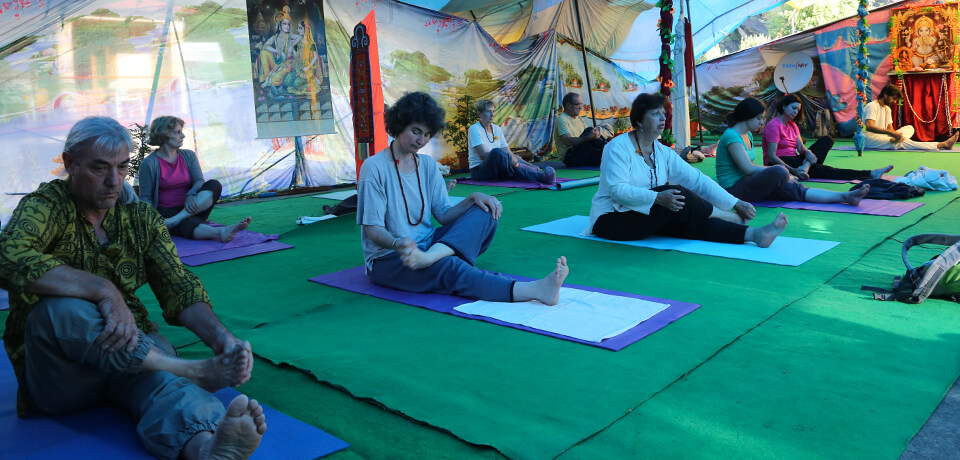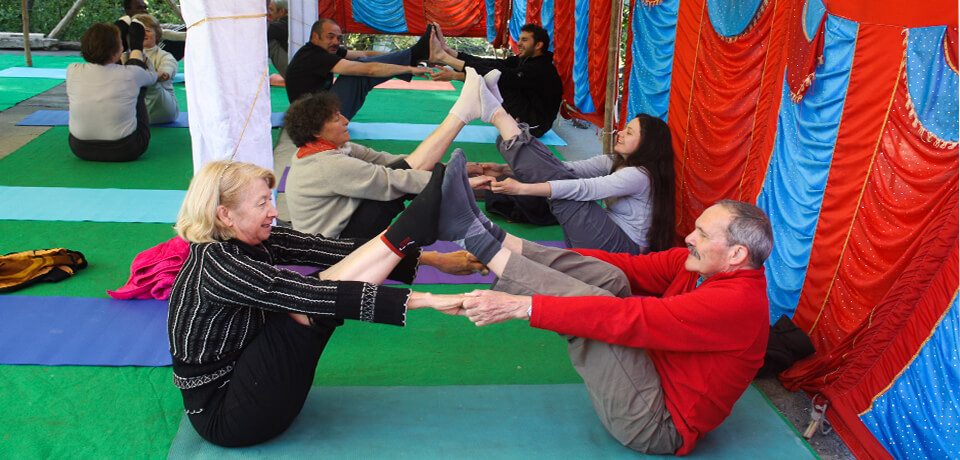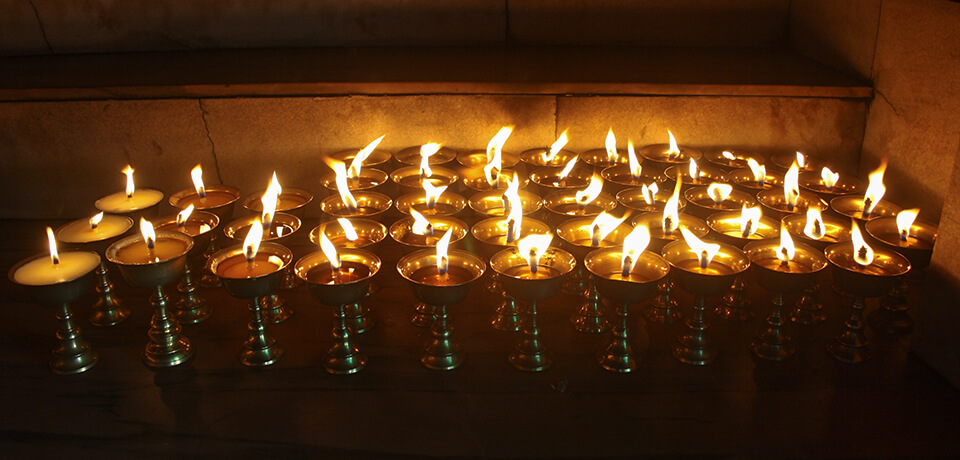Yoga and Sacred Sites
Rating : Easy
Available Dates
No Dates Available
Description:
You will land at Amritsar, the city of Golden temple, a highly spiritual site for the followers of Sikh religion. Further drive to Kangra valley that is the home to ancient Hindu temples, close by at Dharamshala is the Tibetan government in exile where charismatic spiritual leader His holiness “The Dalai Lama” resides in the serene environment. You will love to have glimpse of the lush green tea estates, visiting some of fascinating spiritual sites and ancient commercial town of Mandi.
Reach Manali situated in Kullu valley in the foothills of Himalayas is a paradise in the middle of luxuriant nature, where you will settle down for few days to follow the yoga sessions. It’s the land where saints and sages have meditated since the time immemorial.
Here you will explore remote villages of traditional mountain architecture and the ancient temples of Hindu deities. You will stroll in fascinating thick forest of cedar and enjoy the stunning view of Himalaya ornamented by terraced fields expanded from river bed toward hills.
Quick Look
Day 1: Arrive at Amritsar by evening.
Day 2: Explore Amritsar, Golden temple and retreat ceremony (Diwali festival)
Day 3: Amritsar to Dharamshala (190 km/ 6 hrs)
Day 4: Visit Dharamshala (1830 m)
Day 5: Dharamsala to Mandi via Baijnath- Rewalsar
Day 6: Mandi to Manali (1900 m) (100 km)
Day 7: First day Initiation and introduction of Yoga, and visit Manali
Day 8: Yoga, visit hot spring, Vashishat village and temple
Day 9: Yoga, and visit Naggar castle, old villages and Temples
Day 10: Morning practice Yoga, village to village walk
Day 11: Yoga Practice, optional Ayurveda massage
Day 12: Manali to Delhi (570 km/ 16 hrs)
Day 13: Arrive Delhi & departure
Detailed Itinerary
Day 1, Day 01: Arrive Amritsar
reception at airport, Transfer to the hotel for night stay. Arrive at Amritsar, the city of Golden temple, reception at airport, Transfer to the hotel for night stay.
Day 2, Visit the city,
In morning join the point from where heritage guided tour that takes you through the history, culture and heritage of the city, starts. One can experience the different aspects of old city, its neighborhood and explore the least known parts of this 400-year-old city. Day to visit Amritsar, translates as “pool of nectar” is surrounding the Sikh Golden Temple. A causeway connects to the temple in the middle of the pool. A Sikh high priest reads the holy book, sitting on the east side of the temple, attracts pilgrims from all over the world.
Amritsar translates as “pool of nectar” is surrounding the Sikh Golden Temple. A causeway connects to the temple in the middle of the pool. A Sikh high priest reads the holy book, sitting on the east side of the temple, and attracts pilgrims from all over the world. Visit one of the biggest community kitchens in the world. Most fascinating action of work here is done by volunteers who help to peel, chop, cook, wash dishes and serve free meals to thousands of devotees. In afternoon visit Bagha border to attend the retreat ceremony (or Parade) that takes place on grand trunk road between India (Amritsar) and Lahore (Pakistan) is an incredible experience at sun set. By evening, you can attend the closing ceremony of sacred book, and enjoy the serenity of golden temple.
Day 3, Amritsar to Dharamshala, 190 km, 6 hours.
Leave for Dharamsala, En route visit thousand-year old Brijeshwari Temple dominating old Kangra town, built in Shikara style and dedicated to the goddess Brijeshwari. The 10-minute walk leading to the temple premises is through decorated alley with colorful shops selling articles that devotees need for religious rituals to pay homage to the goddess.
At afternoon, check-in at the hotel and later in the evening, stroll with Indo-Tibetan crowd on the street of Mcleodganj. A former colonial retreat rose to prominence after the large-scale exodus of Tibetans from their homeland in 1959. It is the residence (Ocean of Tranquility) of His Holiness, the Dalai Lama. In the backdrop are the majestic Dhauladhar Mountains. The Tibetan Government in exile has been based here for over decades, with traditional architectural designs drawn from Tibet, Night in hotel.
Day 4, Visit Dharamsala (1830 m)
Morning visit to the impressive Namgyal monastery is surrounded by a row of prayer wheels that houses larger-than-life images of Buddha: Padmasambhava and Avalokteshwara. Tsuglagkhang complex is the most important Buddhist monument of McLeodganj and has an interesting collection of sacred texts based on the teaching of Buddha, the center of medicine and astrology. Visit the Norbulingka Institute and its museum. This Tibetan Arts Museum seeks to promote the study and representation of the Tibetan performing arts to ensure their preservation. We may have the opportunity to meet the monks, (some time close for the renovation and for the Tibetan festive events) the Tibetan handicraft center can also be visited. Night in hotel.
Day 5, Dharamsala to Mandi via Baijnath- Rewalsar , 167 km. O/N hotel.
Leave early, on the way at Palampur take short stop to visit the tea garden, At Baijnath to visit Shiva temple dedicated to Vadianath, that built in Shikhera style and is remarkable for its proportion and architectural beauty.
Further to Rewalsar ( POOL OF ANCIENT WISDOM ) is like a Dark jewel on a wooded hillside, the sacred lake is identified as the Sahar of yore. Legend is that, this is a place from where Padma sambhava left for Tibet to spread the word of the Budha in the 8th century A.D.
Mandi is an important town of Himachal Pradesh, and the gateway to Kullu valley. It is known for its aesthetically carved shikhara style temples of Bhootnath, Triloknath, Panchvakra and Shyamakali at Tarna hill.O/N hotel.
Day 6, Mandi to Manali, (1900 m.) 100 km.
Leave Mandi, en route visit Shiva temple; by afternoon reach Manali, A small touristic town of Kullu valley. Kullu Situated in the inner range of Himalaya is barely 80 km from the plateau of Tibet. It is famous for apple orchards, pine trees and its cheerful people; it is a valley of hundreds of temples and deities, so it is called the valley of Gods. The Aryans gave the name Kulantpitha to this valley which means “the end of the habitable world”. Night will be in hotel.
Day 7, First day Initiation and introduction of Yoga, Pranaya, Asana.
Get back to hotel for breakfast. Later go for local sightseeing. Visit Old Manali village, 3 km from new Manali has temple on the hill, is said to be founded by sage Manu; Hadimba temple, about one km from Manali stands the pagoda style temple of Hadimba Devi surrounded by the cedar forest in Dhungri. According to the legends, Bhima one of the Pandava’ s brother fell in love with an aboriginal woman named Hadimba, the sister of local chief by the name of Hadimba and married her. Lunch break at 1300 hrs, and later get some free time. After 3 hours, proceed for evening session of Pranayama and Meditation till late evening for 2 hours.
Day 8, Demonstration and Practice of Asana, Pranayama
After breakfast, consultation with local astrologer. After lunch sightseeing to Vashisht, (3 km after crossing the Beas River) ancient temple dedicated to sage Vashisht. The sulphur hot spring of Vashisht is endowed with healing power. Night in hotel.
Day 9, Practice of Yoga, Morning practice Pranayama & Asana
After breakfast sightseeing of Nagar castle an ancient capital of Kullu Raja till 1660 A.D. now converted in to hotel, overlooks the entire Beas valley. Visit Art gallery, ancient temples of Tripura Sundari and Shiva. If time permits, on the way back at Jagatsukh an ancient Shikara style Shiva temple and Gaytri Devi temple can be visited. By evening join evening session of Yoga, meditation Silence sitting, Yoga therapy and discussion.
Day 10, Morning Practice of Yoga, Villages to village toward Solang Valley
Morning Practice of Yoga, Pranayama, After breakfast walk through farm land apple orchards from one village to other toward north to explore the village life, you will enjoy pick – nic in the lap of nature, Drive back to Manali , afternoon free, night in hotel,
Day 11, Morning practice Yoga.
Have breakfast and you’ll have a free day for optional ayurvedic massage. Attend evening session of questions and answers . Night will be in hotel.
Day 12, Manali to Delhi, 16 hours, 570 kms.
Morning Yoga Practice, day free, afternoon transfer to bus station, night comfortable bus to Delhi, dinner stop on the way. Bus is fully air-conditioned hence please take worm jacket or Pullover.
Day 13, Arrive Delhi, evening departure.
Once arrived Delhi transfer to hotel, Visit splendid Humayun Tomb, built in 1572 AD in the memory of Emperor Humayun by his Persian wife and chief consort Bega Begum and in 1993 declared a UNESCO World Heritage site. Later, get overview of India gate and President House. After dinner get transferred to airport to take flight to yours onward destination. No hotels in Delhi.
Cost
COST INCLUDE
Ground transport as per itinerary
Airport/Railway Station & Bus Stand transfer
Volvo Bus Tickets from Manali – Delhi
Twin sharing room in a 3-star hotel
All hotels on MAP basis (breakfast & dinner included)
English speaking local Guide for trek/local sightseeing)
Indian Yoga Teacher
Yoga mattress
Medical kit
COST EXCLUDE
Any air fare or train fare
Monument fees
Lunch
Visa and airport tax
Dinner in bus (Manali to Delhi)
Insurance
Beverages and personal expenses
Medical expenses and evacuation
Porters to carry your personal gears
Personal gears used for trekking / expedition
Tipping
Map

Landmark/Highlights
Amritsar: Golden Temple, and center of Sikh religion
Dharamshala: Town of Tibetan government in exile
The sacred lakes and Hindu temples of Kangra and Kullu
Authentic cultural heritage
Yoga in the lap of Himalayan region,
Consultation with local astrologer
Interaction with local population
Charm of the capital of India.



